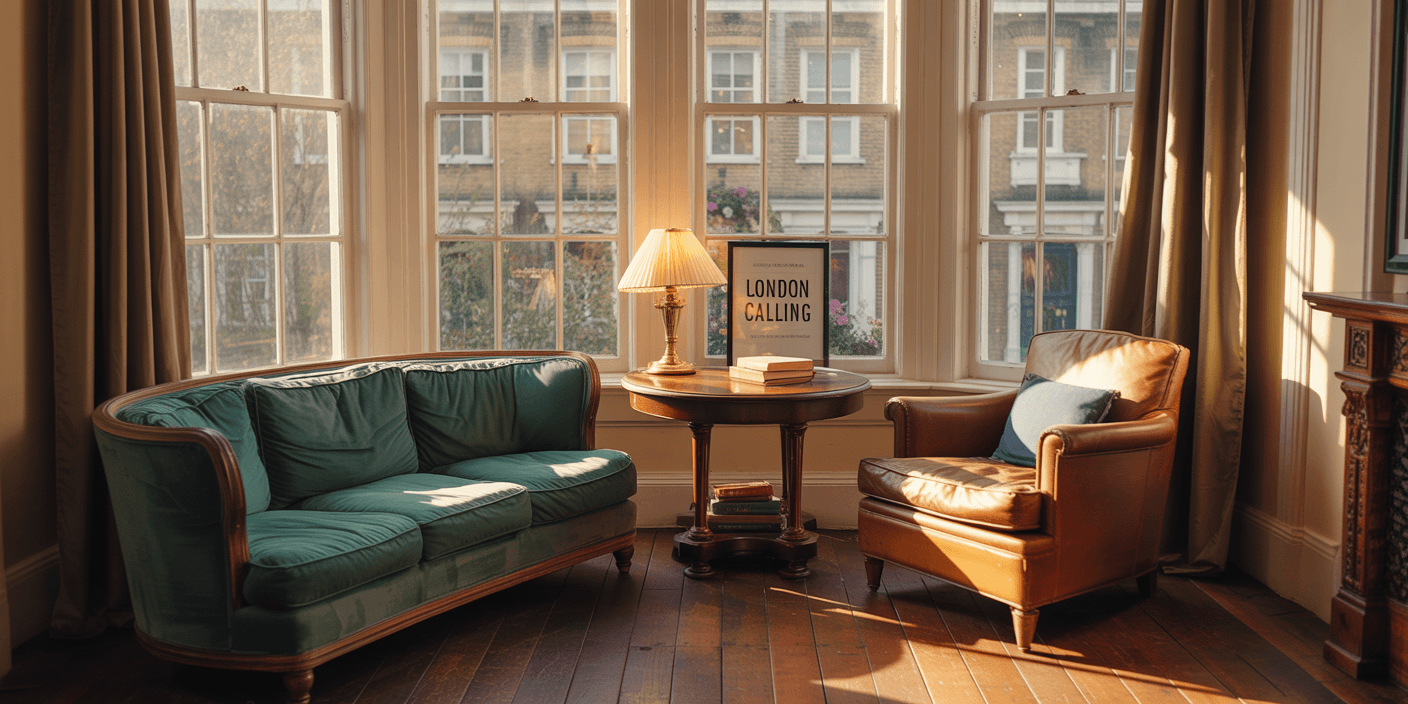Introduction: The Glazing Dilemma Nobody Talks About
Britain’s period homes are admired for their character—original timber flooring, ornate plasterwork, sash windows, and fireplaces that evoke another era. From the exterior, these buildings convey heritage, permanence, and architectural grace.
Yet within their walls, a quieter reality often emerges: they were not designed for thermal efficiency.
Heat escapes.
Draughts persist.
Condensation forms.
And with it, energy bills climb.
In a regulatory environment increasingly focused on performance and sustainability, heritage homeowners face a difficult paradox: how to preserve the soul of a property without compromising on comfort or compliance.
Triple glazing—once considered excessive or incompatible with traditional aesthetics—has re-entered the conversation. Its advocates point to improved insulation, acoustic control, security compliance, and rising EPC standards. Its critics warn of visual intrusion and historical insensitivity.
Can this modern intervention serve a period home without compromising its authenticity?
The answer, increasingly, is yes—if it is executed with precision, expertise, and deep respect for architectural context.
What Is Triple Glazing—And Why Is It Suddenly Everywhere?
Triple glazing, at its simplest, is exactly what it sounds like: three panes of glass instead of the usual two. But beneath that extra layer lies a sophisticated system of thermal control—one that’s no longer just for luxury eco-builds in the Alps.
Here’s what’s inside:
- Three panes of glass, often with low-emissivity coatings to reflect heat back into the room
- Two insulating gas chambers, usually filled with argon or krypton
- Warm-edge spacers and multi-layer sealed units to eliminate cold bridging and condensation
- And increasingly, ultra-slimline variants that make all this performance fit seamlessly into traditional sash and casement frames
The result? U-values that can drop as low as 0.8 W/m²K, far exceeding the UK’s Part L performance standards and often doubling the insulation power of standard double glazing.
But the real shift isn’t technical—it’s cultural.
Where once triple glazing was dismissed as overkill for the British climate, it’s now being recognised as a preemptive solution to rising regulation, rising energy bills, and rising expectations. It’s no longer a feature reserved for Passivhaus architects or new builds in Scandinavia. It’s showing up in suburban upgrades, Victorian retrofits, and even listed properties—quietly delivering warmth, silence, and compliance behind hand-crafted joinery.
So why the sudden momentum?
- Energy prices have made inefficiency unbearable
- Legislation (like the 2022 update to Part L) has raised the bar for thermal performance
- Buyers are prioritising EPC ratings and acoustic comfort
- And for high-end homeowners, the cost delta between double and triple glazing has narrowed dramatically
As more discerning clients push for homes that are both architecturally sympathetic and energetically futureproof, one solution keeps rising to the surface—and it comes with three layers.
But the real question remains: Should you bring it into your heritage home?
We’ll get to that—right after we untangle the red tape.
Heritage Homes & Planning: Are You Even Allowed to Upgrade?

If you own a heritage property, chances are you’ve heard the phrase “not in keeping with the character of the building.” It’s the all-too-familiar refrain that halts thousands of energy upgrades before they begin.
But here’s the truth most homeowners aren’t told:
Planning restrictions don’t automatically rule out modern glazing.
They just demand that it’s done intelligently.
What You’re Actually Dealing With
There are two main planning scenarios where triple glazing might face scrutiny:
- Conservation Areas – These are zones where the external appearance of the home is protected
- Listed Buildings – Especially Grade II or II*, where any alterations—inside or out—require listed building consent
Many homeowners assume that “heritage” status means no triple glazing, full stop. It doesn’t. What it means is this:
You must preserve the appearance, not the inefficiency.
And this is exactly where most window companies fall short. They treat triple glazing as a blunt object. But for specialists who understand how to balance slimline profiles, low-iron glass, traditional putty lines, and handcrafted timber frames—the planning barriers are not only surmountable… they’re often enthusiastically approved.
What Planning Officers Actually Want
Planning departments aren’t window purists. They’re contextualists.
Their job is to ensure that what you install looks “like it’s always been there.” When presented with the right visuals, performance specs, and heritage-grade profiles, they often say yes.
We’ve seen it happen time and again:
- Triple-glazed units approved in Southwark Conservation Area
- Grade II consent granted in Camden, using slimline sash replacements
- Entire facades transformed in Hampstead Garden Suburb—with the charm untouched
Sash Windows London doesn’t just make windows. We mediate between architecture, planning policy, and client comfort. That means providing drawings, mock-ups, and planning support packages that speak the language conservation officers understand.
And when your window partner does that homework for you?
The rules stop being barriers. They become a brief worth rising to.
Myth-Busting: “Triple Glazing Will Ruin the Look of My Home”
Let’s be honest. This is the fear that stops most heritage homeowners in their tracks.
Not the price.
Not the planning process.
Not even the drilling or dust.
It’s the haunting thought that triple glazing will butcher the look of their home’s original windows. Thick. Clunky. Alien. A glassy betrayal of everything they fell in love with.
But here’s the truth—done properly, no one will ever know.
The Aesthetic Illusion: It’s All in the Details
What gives traditional windows their character?
Not the glass.
Not even the thickness.
It’s the lines.
- The putty line that meets the glazing bead
- The slender sightlines between sash and meeting rail
- The natural recess of the glass into the timber
- The proportions that feel “just right”—because they’ve endured for over a century
All of this can be retained—even with triple glazing—if (and only if) the manufacturer knows how to engineer a heritage illusion.
Sash Windows London employs:
- Slimline triple-glazed units (as thin as 28mm overall)
- Low-iron outer glass to eliminate grey-blue tint distortion
- Authentic astragal bars or solid-through glazing bars to replicate the original Georgian/Victorian aesthetic
- Traditional putty or plant-on bead finishes
- Timber species and mouldings that match historical patterns
To the untrained eye—and even to a conservation officer—the difference is virtually invisible.
To the homeowner? It feels warmer. Quieter. More peaceful.
Still Not Convinced?
We often run A/B site photos: one window with slimline triple glazing, the other with the original double. Most clients can’t spot the difference.
Until they put their hand near the frame.
Until they notice the silence.
Until the condensation never returns.
Then, the difference becomes undeniable.
Compliance, Safety & Future-Proofing (Parts L, Q, K)
For most homeowners, compliance isn’t sexy. But it is absolutely critical.
Because no matter how beautiful your glazing looks—or how warm it makes your living room feel—if it doesn’t meet modern building standards, it will cost you.
Higher insurance premiums.
Lower resale value.
Failed sign-off.
And in some cases, legal remediation work you never budgeted for.
Here’s what you’re actually up against.
Part L — Thermal Performance
This is the cornerstone of the UK’s energy performance framework.
- It governs the U-values your windows must achieve
- For replacement windows in existing homes, that means a maximum U-value of 1.4 W/m²K
- For extensions and new builds, it can be stricter
- Failure to meet Part L can lead to planning rejection, EPC downgrades, or compliance fines
Triple glazing, especially in slimline heritage configurations, can bring values down to 0.8–1.0 W/m²K—not only passing the mark, but futureproofing against stricter standards to come.
Part Q — Security Requirements
This one’s often overlooked—but it’s critical if you’re:
- Building a new home
- Converting a property
- Upgrading ground floor or accessible windows
Part Q mandates:
- PAS 24-rated security performance
- Laminated glass in certain zones
- Reinforced locks, sash stops, and frame strength
Sash Windows London integrates these protections discreetly, preserving the traditional profile while silently hardening the property against intrusion. Security needn’t be visible to be effective.
Part K — Glazing Safety
Where glass sits near doors, low sills, or in critical locations, it must be toughened or laminated to prevent injury.
- This is especially relevant in floor-length sash windows, common in Georgian or Regency homes
- Traditional float glass simply won’t cut it anymore
- Failure to comply can lead to legal liability in the event of injury
Every Sash Windows London unit comes with Part K pre-compliance built in—even when it’s not legally required. That’s not an upsell. It’s a principle.
The Takeaway: Your Windows Aren’t Just a Style Decision
They’re a compliance decision.
A risk decision.
A future valuation decision.
And unless your window provider understands how to engineer performance behind a heritage face, you may be buying a product that looks charming—but costs dearly.
Sash Windows London doesn’t just measure frames.
We simulate outcomes. We model compliance. We do the paperwork.
So you don’t have to.
Cost vs Value: What’s the Real ROI of Triple Glazing?

Let’s address the question most heritage homeowners eventually ask—often with a wince:
“How much more does triple glazing really cost?”
The honest answer?
Yes, it’s more expensive than double glazing—initially.
But in today’s energy-conscious, legislation-driven, and resale-sensitive market, focusing only on the price tag misses the bigger picture.
Because this isn’t about windows.
It’s about:
- How much warmth you keep inside
- How many buyers you attract later
- And how much money you save every single year you live there
Let’s break it down.
Energy Savings That Compound
- Upgrading from single glazing to slimline triple can cut heat loss by up to 60%
- Typical UK heritage homes spend £2,500–£3,000/year on heating
- A triple-glazed system can slash that by £500–£700 annually
Over 10 years, that’s £5,000–£7,000 back in your pocket—without factoring in rising energy costs.
Maintenance-Free Means Cost-Free
Heritage-style windows need regular upkeep. Repainting timber frames, re-puttying sashes, replacing misted panes—it adds up.
Triple-glazed units by Sash Windows London are:
- Factory-finished with microporous coatings
- Built with laminated and low-iron glass that doesn’t fog, warp or yellow
- Backed by warranties that outlast the average installer
What you pay upfront, you never pay again.
Boosting Property Value Without Compromise
Buyers today don’t just look at cornicing and fireplaces—they scan the EPC rating.
- Homes with higher energy performance sell faster and at a premium
- Triple glazing improves both the EPC score and the perceived quality of the property
- More importantly, it removes a future headache for the next owner
That’s not a cost. That’s a value multiplier.
Smart ≠ Expensive. Smart = Strategic.
Here’s the uncomfortable truth:
Most people who choose double glazing for “cost reasons” regret it.
Not because it’s bad.
But because it doesn’t do enough.
Not warm enough.
Not quiet enough.
Not futureproof.
Not compliant with where building standards are heading.
And soon, they’re replacing again—this time with the solution they should have chosen first.
“Triple glazing, properly specified, is not an indulgence. It’s a one-time investment that earns its keep—silently, efficiently, and without complaint.”
Who Is Triple Glazing Right For—And When to Say No
By this point, the performance case is clear.
The compliance case is sealed.
And the aesthetic case? Stronger than most think.
But let’s set the record straight:
Triple glazing isn’t for everyone.
And if anyone tells you it is, walk away.
At Sash Windows London, we’ve turned down dozens of projects where double glazing—or even restoration—was the smarter choice. Why? Because every home tells a different story. And our job is to listen before we recommend.
Here’s how to know where you stand.
✅ Triple Glazing Makes Sense If…
1. You live in an exposed, draught-prone, or high-noise environment
Urban homeowners near roads, flight paths, or busy pavements benefit hugely from the acoustic insulation of triple glazing—often halving ambient noise.
2. You’re upgrading a period home for long-term comfort or resale
For homeowners planning to stay 10+ years—or sell smartly—triple glazing delivers thermal ROI and higher EPC scores that matter more than ever in the buyer’s market.
3. You need to comply with modern building standards
Extensions, new builds, or full-house retrofits often fall under updated Part L / Q regulations. Triple glazing gets you there without visual compromise.
4. You value performance that ‘just disappears’
You want the comfort of 21st-century technology—but you still want your guests to think your windows have been there since 1840. That’s exactly what our slimline triple units achieve.
❌ Triple Glazing Might Not Be Right If…
1. Your property is Grade II* or Grade I listed
In rare cases, planners require absolute material and proportion authenticity. In these situations, slimline double glazing or restoration with vacuum glass may be better suited.
2. Your window openings are unusually small
Some very narrow sashes or shaped frames can’t physically accommodate triple-glazed units without changing sightlines or joinery profiles. But there are always elegant workarounds.
3. You’re planning a light-touch aesthetic renovation
If you’re only lightly refurbishing for rental or resale in a lower-demand zone, the cost uplift of triple glazing may not return its full value within your timeline.
The Role of a Responsible Craftsman
“We don’t just install glazing. We qualify purpose.”
That means asking questions no one else does:
- How long will you stay here?
- What do you care more about—comfort, compliance, or conservation?
- Would this investment feel good five winters from now?
When the answer is yes, we’ll help you specify the perfect system.
When the answer is no, we’ll guide you to the smarter alternative.
That’s not sales. That’s stewardship.
Book Your Heritage Glazing Audit (Before You Regret It Later)
“Every winter you delay is another £1,000 out the window—literally.”
You’ve done the research.
You understand the trade-offs.
You’ve seen how performance, aesthetics, planning, and compliance can work together—beautifully—when done by the right hands.
But now comes the only part that matters:
What are you going to do about it?
Introducing the Heritage Glazing Audit
A free, no-pressure consultation built for period property owners.
This isn’t a sales pitch.
It’s a detailed audit that gives you:
- U-value simulation of your current windows vs triple glazing
- Planning-readiness assessment (especially for conservation zones)
- Aesthetic and joinery profile review
- Cost vs ROI breakdown based on your home’s energy profile
- PDF report with visualisations and Part L/Q/K compliance mapping
Whether you move forward with us or not, you’ll walk away knowing:
- What’s possible
- What’s smart
- And what’s not worth touching
“If nothing else, you’ll stop guessing. And start planning.”
Why Wait? The Planning Clock Is Always Ticking
Each season you wait, prices rise.
Energy regulations tighten.
And comfort? It continues to leak—frame by frame, sash by sash.
With one call, you could lock in a compliant, conservation-ready glazing strategy that works for your home, your council, your comfort, and your resale future.
Book Your Free Heritage Glazing Audit
Takes 30 seconds
Tailored to your exact postcode & planning zone
Includes no-obligation spec sheet PDF
Delivered by Sash Windows London – the trusted specialists in performance-led, conservation-grade window systems
“Because beautiful homes deserve intelligent upgrades.”







